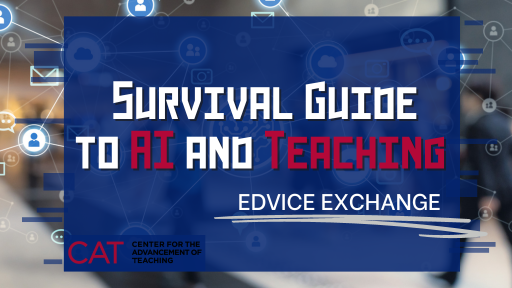Jonah Chambers & Jeff Rients

In the previous installment of this series, we outlined some ideas for how to put artificial intelligence to work as a tool in the classroom. This time, instead of adopting AI as a new educational technology, we propose that you use AI as an object of inquiry. A wide variety of controversial topics intersect with the rise of generative AI, providing a timely touchstone for the development of student critical thinking and media literacy skills. Your students could productively engage with issues surrounding AI such as data privacy, dataset bias, environmental impact, intellectual property, and labor. Here are just a few examples:
- Collaboratively review the privacy policy and terms of use before using an AI tool. Will the students’ input become the property of the company owning the tool? What sort of privacy protections are in place?
- Contact multiple AI providers and ask them about their protocols for avoiding dataset bias issues like the now-infamous white Obama problem. Which responses suggest good corporate stewardship? How can their claims be tested?
- Compare and contrast the environmental impact of AI tools to the impact of search engine usage, cryptomining, the overall impact of the internet, etc.
- Debate the intellectual property concerns of large language AI tools versus other forms of intellectual appropriation.
- Attempt to map out which professions will be most impacted by AI in the short term. Which jobs will go away and which will be completely transformed?
Importantly, these sorts of investigations do not require you or the students to use the tools, making it an ideal choice for those who are uncertain about their willingness to join the AI revolution. However, some students may opt to interrogate the AI itself as part of their investigation. In this latter case, students might find it interesting to form their prompts as interview questions, tasking the AI with justifying its own existence!
However you want to handle AI in your course, it will be important to include a statement on your syllabus that explains your policies so that students understand the expectations for your course. The CAT has developed sample syllabus statements that provide language you can adopt for your own use.
Remember, although we are providing three different paths forward in the use of AI in your classroom, you don’t have to choose just one! A mix-and-match approach may best fit your learning environment. Your course might benefit, for example, from a unit critiquing AI followed by a unit that makes use of AI. Or vice versa.
In the next installment, we’ll look at creative assessments and assignments that not only discourage illicit student usage of AI but help your students learn as well!
Jonah Chambers is Senior Educational Technology Specialist at Temple University’s Center for the Advancement of Teaching. Jeff Rients serves as the Center’s Associate Director of Teaching and Learning Innovation.